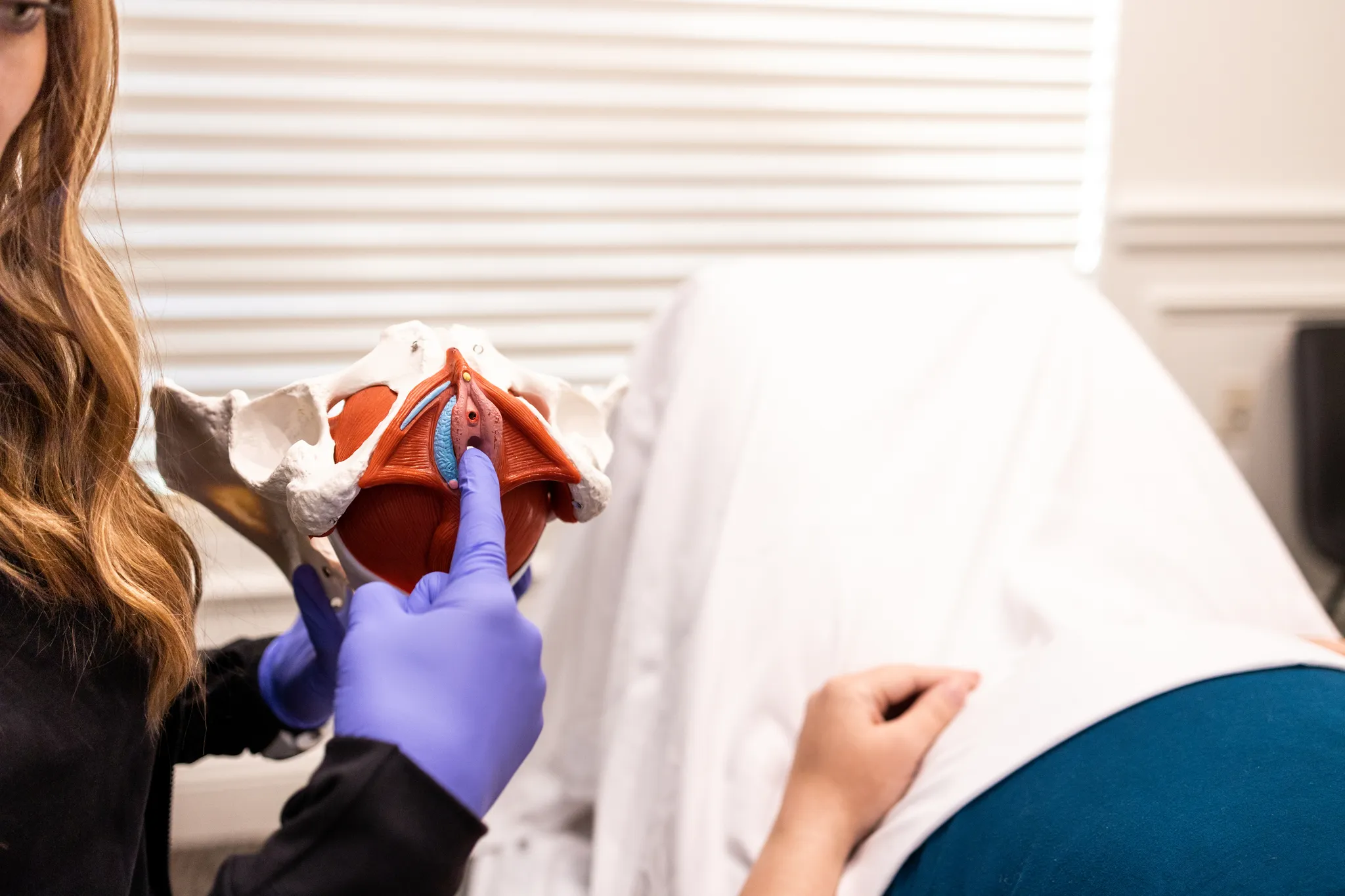Menopause and the Pelvic Floor
Although pregnancy and childbirth are most commonly associated with the start of pelvic floor dysfunction, menopause and perimenopause can also cause changes in the pelvic floor that can lead to dysfunction or aggravate current issues. In fact at least 50% of women who go through menopause will experience some type of pelvic floor issue!
What is menopause?
Perimenopause is the start of hormonal changes that lead to menopause and can be marked by irregular or heavy periods as well as other symptoms including hot flashes, night sweats, and changes in pelvic floor health. During this phase estrogen and progesterone levels in the body start to decrease triggering many of the physical changes associated with menopause. Menopause is defined as occurring when over 12 months has passed since a woman’s last menstrual cycle. It occurs at an average age of 51, but commonly occurs between the ages of 40 and 60.¹ During menopause changes in hormonal levels, muscle mass, and blood flow can all cause changes to the pelvic floor.
During menopause, estrogen levels decrease resulting in reduced stimulation of estrogen receptors throughout the pelvic region. 1 As a result there is a decrease in blood flow to the pelvic floor. This can result in vaginal dryness, reduced lubrication of tissues, thinning of the perineal and vaginal tissue, weakening of the pelvic floor muscles, and recurrent urinary tract infections. These changes can contribute to pelvic pain and loss of muscle mass and tissue integrity contributing to urinary incontinence or prolapse. These wide ranging symptoms that affect the genital, reproductive, and urinary systems all fall under the umbrella of genitourinary syndrome of menopause. Around 15% of women will have at least one of these symptoms during peri-menopause, and around 50% of women will have some of these symptoms during menopause or post-menopause. 2 Unfortunately, if left untreated, most of the pelvic floor issues associated with menopause such as prolapse and incontinence do not improve and may actually worsen.
What can help?
Some tips to help with pelvic floor changes associated with menopause are: use a vaginal moisturizer such as Replens regularly to help with vaginal dryness, use appropriate lubrication during intercourse, and integrate regular strength training into your exercise program to maintain muscle mass and bone density.
Changes in perineal skin irritation, new leakage or incontinence, and pelvic pain should always be evaluated by your medical provider. Pelvic floor physical therapy can be helpful during menopause to educate you on your unique pelvic floor changes, help you learn how to improve your pelvic floor strength and coordination, and utilize a variety of treatment approaches including lifestyle changes, manual therapy, dry needling, and exercises to optimize your pelvic floor and surrounding musculoskeletal structures. No matter what phase of menopause you are at, or how long you have had pelvic floor issues, pelvic floor physical therapy can be helpful for you! We often treat women who have been experiencing symptoms for several years with success.
If you are experiencing any of these symptoms feel free to reach out to us, at Reborn Pelvic Health & Wellness, to get all your questions answered and to get an individualized treatment plan. We are here for you!
1 Alperin M, Burnett L, Lukacz E, Brubaker L. The mysteries of menopause and urogynecologic health: clinical and scientific gaps. Menopause. 2019 Jan;26(1):103-111. doi: 10.1097/GME.0000000000001209. https://www.ncbi.nlm.nih.gov/pmc/articles/PMC6376984/. Accessed August 30, 2023.
2 Angelou K, Grigoriadis T, Diakosavvas M, Zacharakis D, Athanasiou S. The Genitourinary Syndrome of Menopause: An Overview of the Recent Data. Cureus. 2020 Apr 8;12(4):e7586. https://www.ncbi.nlm.nih.gov/pmc/articles/PMC7212735. Accessed August 29, 2023.
Blog By: Dr. Carol Beck, PT, DPT


